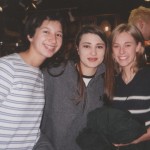On January 3, 2014, one of my heroes passed away. And I didn’t even know his name.
I read about this artist’s death on an obscure forum, reported by one of his close friends and colleagues. I nearly passed over the article, but a twinge of curiosity compelled me to scroll through his artwork. My eyes grew wide as image after image evoked long-forgotten memories, revealing the impact this man had made on my life. His artwork ignited my creativity and inspired my love for visual art and art history. His name was Greg Martin, and he was a video game box illustrator.
Few would consider packaging and promotional illustration “high art.” You certainly won’t find Martin’s pieces in prestigious galleries. But to a 7-year-old boy, Martin’s cover for Sonic the Hedgehog 2 might as well have been the Mona Lisa or Starry Night. It was definitely more interesting to me than those paintings were in that day. The looming menace of Dr. Robotnik; the monolithic “2” crumbling apart; the smug hero, eyebrow cocked in an “I-dare-you-to-play-this-game” smirk—I had to draw those images for myself.
So I grabbed a stack of computer paper, ripped the perforated strips from the edges, and sprawled on the floor to begin my task. I slowly copied each line, nodding in approval when the pencil did what I wanted, scowling when the eraser left pinkish-gray streaks that only amplified my mistakes. Before long, crumpled paper balls littered the floor.
Finally I held up the fruit of my labor, scanning it one last time. The characters were recognizable. The eraser scars were minimal. I’d finally gotten the “2” to look three-dimensional—that was the hardest part. Maybe it wasn’t Albrecht Dürer’s self-portrait from age 13, or Pablo Picasso’s El Picador from age 8. But I was happy with it. I handed the picture to my mom and ran off to grab another video game box.
Martin probably didn’t set out to motivate kids into life-long obsessions with art and design. His job was to make video games look exciting and fun, and he worked hard to meet that goal. He typically needed a week to perfect his airbrushed illustrations, but his employers often limited him to three days. Instead of rushing an illustration that didn’t meet his standards, he worked all-nighters, cramming five days of work into three. This resulted in images instantly recognizable to any kid growing up in the 90s: Pac-Man, Bomberman, and—of course—nearly every Sonic the Hedgehog game of that generation.
It’s no coincidence that Martin also illustrated the boxes for several games starring the Flintstones and the Jetsons—he got his start working for Hanna-Barbara. There, he developed a passion for other artists of his sub-genre. A few desks down, crowds gathered around another young cartoonist: Seth MacFarlane, creator of Family Guy. But as a tenderfoot artist, I wasn’t drawn to celebrity cartoonists like MacFarlane. I wanted to copy the work of illustrators like Martin, not because I knew who they were, but because their work radiated a level of energy and quality that I wanted to emulate.
We’ve all watched movies like It’s a Wonderful Life and Mr. Holland’s Opus enough to know that our lives and work can have influence, even if we never crash through the stratosphere of notoriety. That’s why it’s so laughable when we hear athletes and celebrities whine, “I never asked to be a role model.” Each of us is a magnet, winding our way through a world of iron filings. Other people are affected by our decisions, whether we like it or not.
Yet it’s easy to get bogged down by the daily grind, wading through feelings of insignificance. We want to change the world!—or at least leave our mark on it. But most days work can feel like digging a hole in a lake; the water flows back in as soon as it’s scooped out, as if we were never there at all. According to the writer of Ecclesiastes: “No one remembers the former generations, and even those yet to come will not be remembered by those who follow them” (Eccles. 1:11).
At times, I’ve bought into the lie that prestige and influence are synonymous. A bigger stage means a bigger audience, right? But if I hoist myself up on the pole of ambition, one day I’ll stretch out my arms and won’t be able to touch anyone. On the other hand, when I get lost in the crowd, every bump and every nudge ripples from person to person, a chain reaction that can only be observed from a God’s-eye view.
Harold Best, dean of the Conservatory of Music at Wheaton College for over 25 years, says in an open letter to artists everywhere,
“Chances are, you will not be great. But you can be good, and you can dwell lovingly with goodness. In this way, you will be found at the clarifying center of a civilization’s soul. And if through your prayers, your work, and your example, you can persuade others that they too must keep company with goodness, then just maybe our rankled and riddled culture will find healing and mending.”
The truth is, our work has eternal significance. God gave us this task before the Fall (Gen. 2:15). And now that we live in a sin-scarred world, our creative work of finding order in chaos and fixing whatever’s broken takes on a redemptive quality. Even mundane tasks like filing papers can be unimaginably valuable, if they are laid at the feet of God for the benefit of others.
My life’s foundation is composed of the unappreciated work of people like Greg Martin; Tim Jacobus, cover artist for all 62 Goosebumps books; and Raul Martin, who painted the beautiful illustrations in National Geographic: Dinosaurs. Their artwork fed that part of me that craves excellence, originality, and fun—qualities that I hope define my own work today.
I’ve been influenced by hundreds of thousands of anonymous benefactors. For now, I’m grateful that I can finally put a name to one of them. Thank you, Greg Martin.











